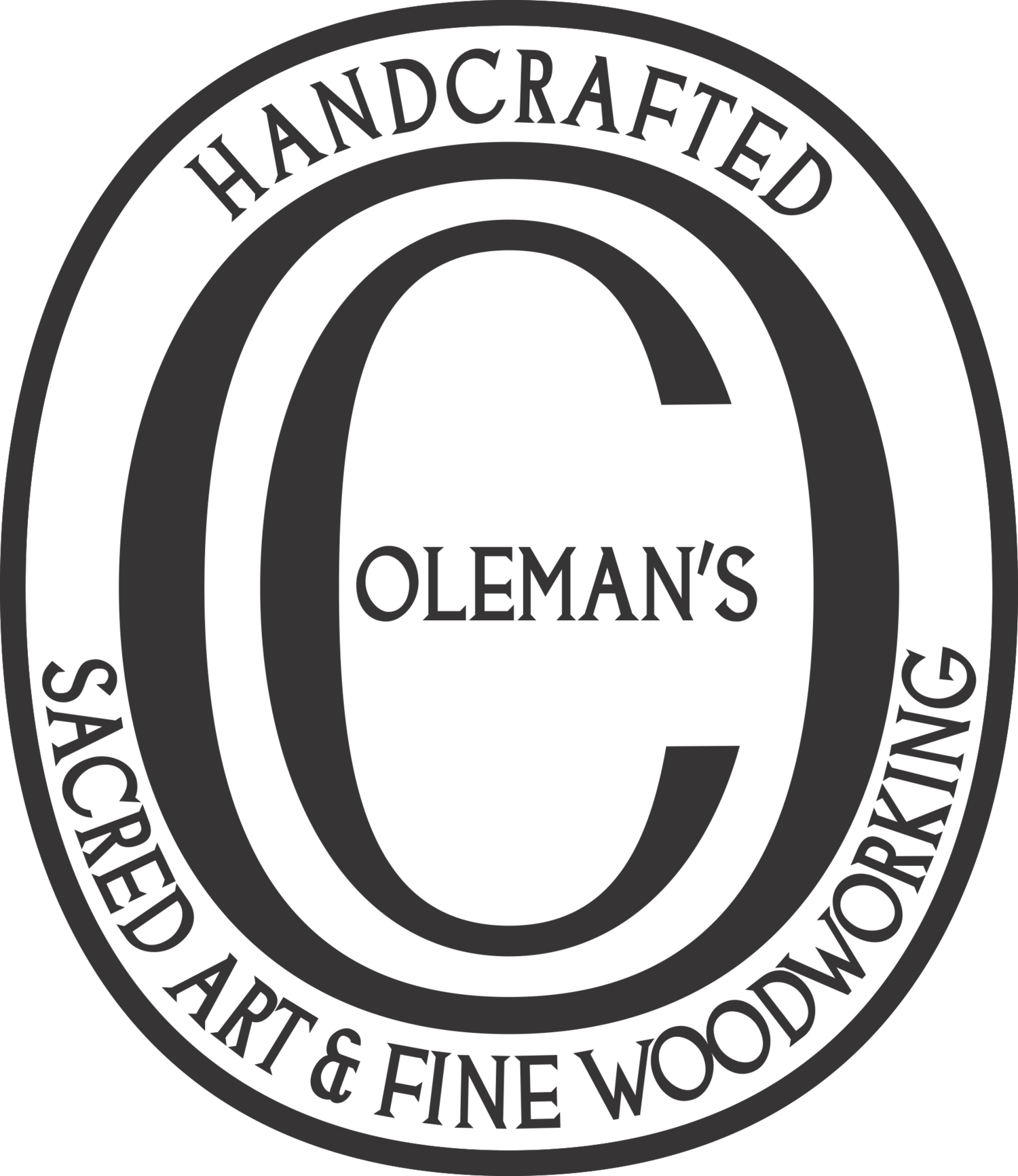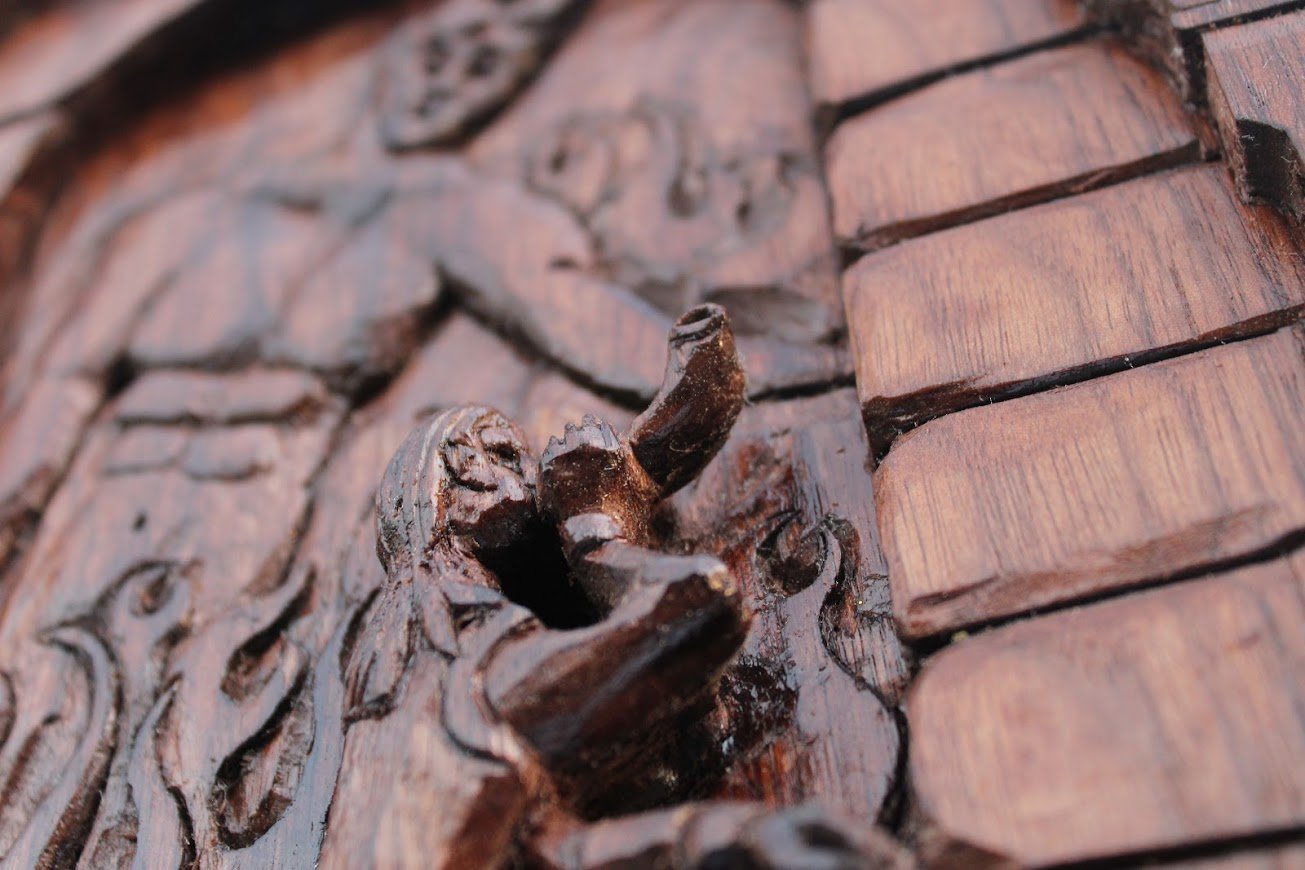
The Death of King Fingolfin
January 2021
J. R. R. Tolkien’s The Silmarillion narrates the final actions of Fingolfin, High King of the Noldor. Upon hearing the news of the desolation and impending annihilation of all his kingdom at the hands of Morgoth, of whom Sauron is only a servant, Fingolfin rides in haste to Morgoth’s lair, Angband, in the north. There, standing at the gates of hell, Morgoth answers Fingolfin’s summons, towering over him as a mountain. Fingolfin fights Morgoth in single combat in defiance of his malice, and dies quickly thereafter.
This carving compares the final act of Fingolfin’s life to that of a martyr’s death. The hero sits high and resolute on his horse while blowing his horn without fear of death. Not only does Morgoth look down upon him, but also two birds, signifying two opposed wills. The vulture represents both death and the wicked delight of death.
The eagle represents the benign will of the Undying Lands, and it is Thorondor, the Lord of the Eagles, who brings the tale of the battle back to the Noldor.
The elvish words “Atani” and “Quendi” - “Men” and “Elves” - are carved on the fiery bases of the two pillars. The weight of the entire fortress is pressing down on them, and they are engulfed in flames, demonstrating Morgoth’s hatred and oppression of the “Children of Illuvatar”.
Fingolfin’s nobility of heart and strength of will enable him to fight the hopeless battle, and thus, in an act akin to martyrdom, Fingolfin is brought to the Halls of Mandos in the Undying Lands. Even though Tolkien’s elves are immortal, in order to return to the Undying Lands, the Noldor must experience death either physically or figuratively, through the passing away of all they have created, known, and loved. In this way, Fingolfin exemplifies the attitude we, too, should embrace regarding life, death, and the evil of the world. The crown atop the entire scene illustrates that Fingolfin is earning the “crown” of martyrdom, more precious than any earthly kingship.
“The Death of King Fingolfin” was carved in cherry and measured 14” x 10”.





